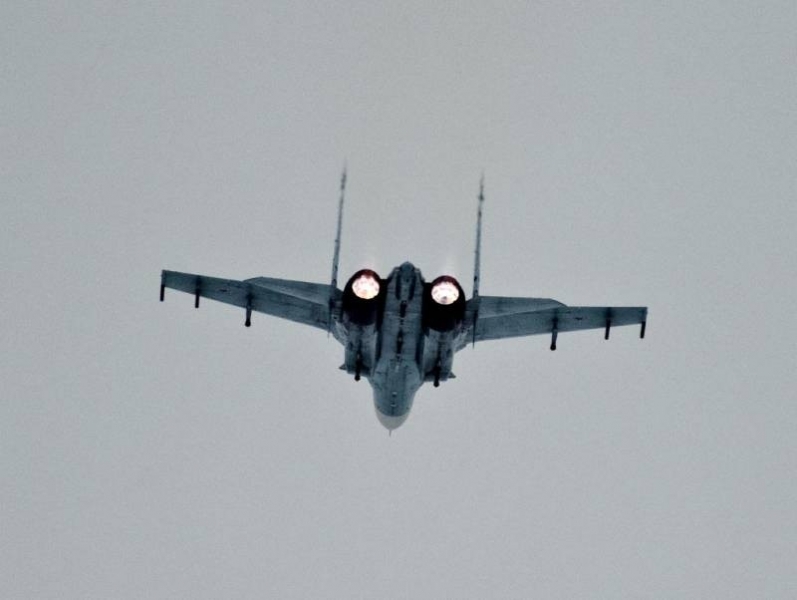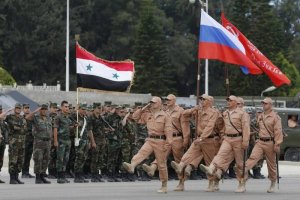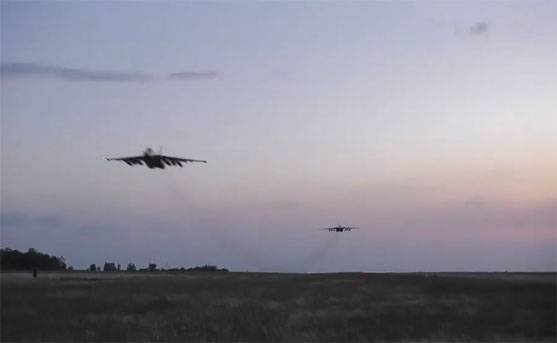undoubtedly, published in the domestic military-analytical portals statement of "United Shipbuilding Corporation" Alexei Rakhmanov to start runaway modernization of shipyards 35th Shipyard JSC "SC" Zvezdochka "for the subsequent docking of modernized heavy aircraft carrier" Admiral Kuznetsov "allowed to breathe a sigh of hundreds of thousands of relief patriotic reviewers, knowledgeable about the actual problems of the Russian Navy at the present stage of its development.

And it is not surprising, because the information about the accident, which led to the loss of floating dock PD-50 on the night 29 on 30 October 2018 of the year, led the expert community to doubt the compliance deadlines Northern Fleet only Russian aircraft carrier, which is one of the key elements in maintaining the stability of the ship's combat assault groupings CSF in the north-western strategic direction (including the North Atlantic and the Barents Sea). Even more so that the transfer to Murmansk (through the Northern Sea Route) Based on HMB Fokino floating dock PD-41 is the view of how this utopia terrible technical state of the latter, and the fact, that the floating dock is almost exhausted service life.
The only 279th OKIAP Northern Fleet faced with both quantitative, and with technological backwardness fleet of Su-33 and MiG-29K / KUB from tactical aviation, the armament Navy and USMC
Meanwhile, it would be very naive to believe, that one only the timely completion of major repairs and modernization of heavy aircraft, etc.. 1143.5 "Admiral Kuznetsov" (with a final ceremony of transfer of the Northern Fleet 2021 year) It will be enough to eliminate all gaps, one way or another accompanied by an equally deficient in the Russian Navy carrier-based component over the last three decades.
So, despite the "Admiral Kuznetsov" The announced Deputy Commander of the Russian Navy Viktor Bursuc re unique shipboard SPAR "Carapace-M", which in the long run will allow to capture simultaneously four 3-primaries targets at a distance of up to 40 km by equipping staff SAM 57E6 more powerful starting solid boosters (booster stage), antiaircraft capacities deployed aboard the aircraft carrier of the 279th separate naval fighter air regiment still leaves much to be desired. That is, today in a duel situation Deck wing of our aircraft carrier is unable to form a proper antiaircraft / missile A2 / AD zone within a radius of 700-1300 km.
And the root of the problem here is not just that, that the number of regularly staying on board "Admiral Kuznetsov" deck interceptors / bomber Su-33 and MiG multifunctional 29K / KUB generally ranges from 12 to 16 meals. (3-4 executives against 12 units of F / A-18E / F on board atomic carrier class «Nimitz»), but also in the multiple technological lag element base avionics above domestic carrier-based fighters from the electronic "stuffing" machines shtatovskih. In particular, SU-33 and MiG-29K / KUB still equipped hopelessly obsolete airborne radars N001K based Cassegrain antenna and "Beetle-M" on the basis of slotted array antenna.
Noise immunity of data stations is at a very mediocre level, that completely deprives carriages decked "crackers" and "MiG" to conduct operations to win air superiority and interception in the case of involvement of an opponent such advanced electronic warfare, as a hanging container complex multiband jamming AN / ALQ-249 NGJ-MB («Next Generation Jammer Mid — Band») Directional suppressing or integrated complex EW AN / ASQ-249 «Barracuda» (included in the architecture of the onboard fighter defense complexes F-35A / B / C).

How and why has changed Ukrainian society and the ruling elite
The energy potential of radar and N001K "Zhuk-M", caused by far the highest average and peak pulse power, It provides a range of "capture" targets with EPR 1,2 quarter. m (target type «F / A-18E / F») order 70 and 80 km respectively. Against this background, the crews of the "Super Hornet", Cycling powerful and more Interference-APAA radar AN / APG-79, will be able to take the Su-33 to the support at a distance of 180-200 km, and "take over" at a distance of 150-170 km (in connection with an impressive EPR Su-33, reaching 15-18 sq. m). After that, the course can be put "air-to-air" missiles long-range AIM-120D, target designation which will be issued via a secure communication network radio channels «Link-16" or aircraft carrier (F/A-18E/F), or deck aircraft AEW E-2D «Advanced Hawkeye», allowing pilots "Super Hornet" do not even need to enter the radius of destruction of air combat missile R-27ER / EM (110-130 km).
Unfortunately, in this situation the existing modification deck "drying" does not have the arsenal single trump, which could be contrasted with the deck conjunction defense «F / A-18E / F - AIM-120D», in fact acting weapon control system SUV-27K does not have the hardware and software adaptation to the use of modern air combat missiles RVV-SD and the "product 180" (the latter is a conceptual analogue AIM-120D), equipped with active-passive and active-semi-active radar seeker 9B-1103M family-200PA / FP. This fact illustrates the extremely disappointing picture, according to which the Su-33 will not work on remote air targets even for target designation from third-party funds radar and electronic intelligence (without the intervention of its own radar).
Partially salvage the situation could have three or four multi-level deck fighters MiG-29K / KUB, advance equipped with not only a more advanced radar "Zhuk-M", but also terminals with the traffic channels multiplexed MIL-STD-1553B, and MIL-STD-1760, which would provide adaptation fighter weapons control system for use as already comprised in videoconferencing URVV F-77 weapons and RVV-SD, and prospective interceptors "Product 180".
But not everything is so rosy, because stationed on board the aircraft carrier "Admiral Kuznetsov" helicopters airborne early warning Ka-31RLD equipped with all the same good old radar system E-801 "Eye" on the basis of PFAR, the range of which type of "Super Hornet" targets barely 105 km, that approximately 3,5 times less than, than that of AN / APY-9 radar-APAA, installed on the deck of US aircraft AWACS E-2D «Advanced Hawkeye». Therefore, in performing tasks VOP deck MiG-29K / KUB will be entirely dependent on a "long-sighted" AEW planes A-50U; which means, that about any self-sufficiency 279th OKIAP can be no question.
Another significant technological disadvantage onboard radar N001K deck interceptor Su-33 is no so-called bypass channel (auxiliary foster radar path), intended to detect and track the surface (surface and ground) stationary and moving targets in the terrain mapping modes terrain, synthetic aperture (SAR), converts synthetic aperture (ISAR) and direction finding moving objects (GMTI). Conclusion: in the tasks "air-surface" deck "Flanker-D" looks very pale, even against the backdrop of still being on the US Navy's multi-role fighters armed with deck F / A-18C / D, Multimode equipped airborne radar AN / APG-73 with slotted antenna arrays and additional bypass channels for operation on surface objects.
As a heavy threat for the Su-33 can be treated even F / A-18C / D «Hornet», past deep renewal program avionics
Against this backdrop of the ocean there is a diametrically opposite situation. According to the news, and the military-analytical portal «Warspot» referring to the headquarters of the military-industrial corporation «Raytheon» and competent sources in the command of the United States Marine Corps, "Hornet" was held at the Commission's arsenal will retrofit program for prospective airborne radars with AFAR AN / APG-79(V)4. These products boast not only the above-mentioned standard modes of ground targets (SAR, ISAR, GMTI), but also modes LPI («Low Probability of Intercept», "The low probability of intercept") and the so-called dopoiska during maintenance in the course of air targets.

Struggle for the Middle East. US "give" Syria Russia?
LPI mode Implementation APAA achieved by radiation-wideband radar slozhnostrukturnyh and differing in amplitude of pulses of electromagnetic, Resettable likelihood direction finding of the obsolete radar stations warning irradiation SPO-15 "Birch" (mounted on the Su-33). dopoiska mode while support is achieved by maintaining the spatial position of the scanning radar beam (in elevation and azimuth planes) even if, if accompanied by a goal temporarily plunged off the screen radio horizon or hidden in the folds of the terrain.
Consequently, if it appears again in the line of sight AN / APG-79 radar will be able to ten times faster to take her to the exact tracking of radio correction and issue launched missiles AIM-120D air combat, which may decide the outcome of the duel in the air medium-long distances. The pilots of our Su-33 of these capabilities on-board radar system can only dream.
Meanwhile, the inner diameter of radome 33 and Su-geometric parameters of its forward fuselage quite allow integrated modern PFAR and APMA-radar N011M "Bars-R", N035 "Irbis-E", and regularly advertised on the famous Russian military-analytical platforms radar "Zhuk-AME", transceiver modules which are manufactured using a unique technology LTCC (low temperature co veneering ceramic).
Eugene Damantsev











